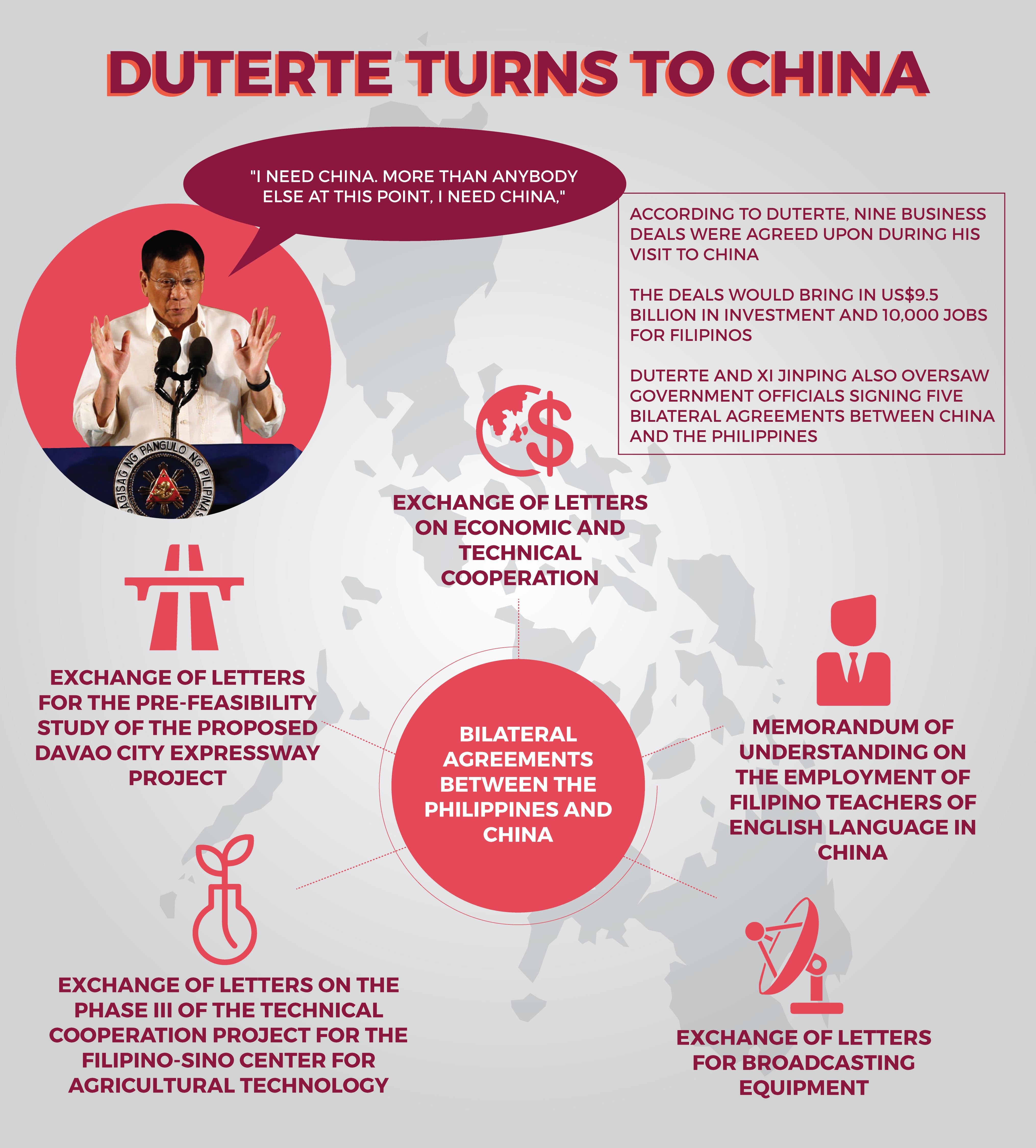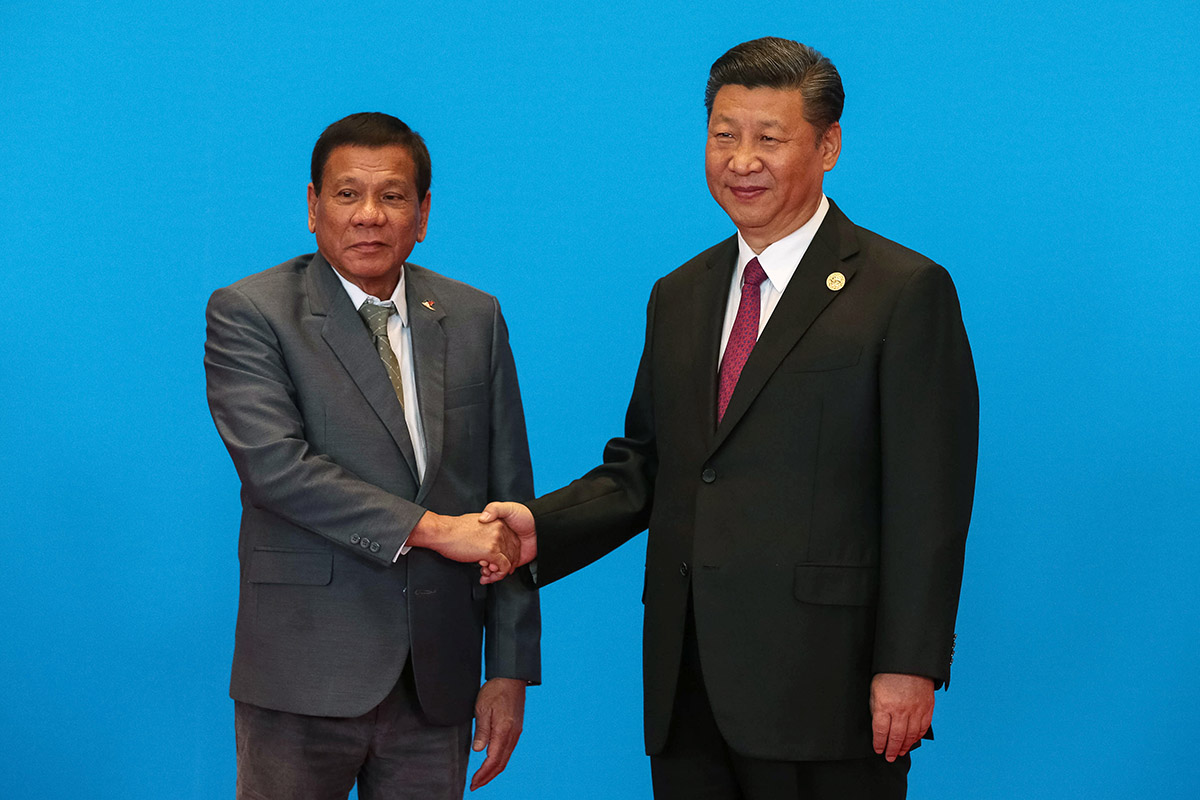Philippine President, Rodrigo Duterte recently returned from China bearing gifts. The president had signed nine business agreements when he was there.
“The nine business agreements signed during my visit yielded an estimated value of 9 to 8 billion dollars in investments. These are projected to generate more than 10,000 jobs for our countrymen and women,” Duterte said in his speech upon returning from China.
The president was in China last week to have a bilateral meeting with President Xi Jinping. He also spoke at the Boao Forum in Hainan which is considered to be Asia’s equivalent of the World Economic Forum held annually in Davos, Switzerland.
Aside from that, Rodrigo Duterte also made a stop in Hong Kong. To the surprise of many, the president issued a formal apology over the Manila tour bus hostage incident in 2010 when eight Hong Kong citizens were killed in a botched rescue operation. The apology was long overdue as previous presidents have refused to apologise for the incident.
However, some are questioning Duterte’s sincerity of the apology. The main issue with his apology is the suspect timing – coming after signing business deals with China – which some have considered to be pandering. While his intentions remain unknown thus far, what’s clear is that ties between the Philippines and China have never been closer.

Among the business deals signed between the two countries includes a loan agreement with China agreeing to help fund the construction of the Chico Pump Irrigation Project in Northern Luzon. The Philippines Ministry of Finance said that the loan agreement was worth US$62 million. Besides that, the Philippine government also secured a US$4.36 million grant from China that aims to modernise the Philippine’s hybrid rice centre.
Those agreements are part of five memoranda of understandings (MOU) that were signed between government officials in the presence of Duterte and Xi Jinping.
Ever since Duterte was elected into office, the relationship between the two nations have become increasingly closer. For Duterte, keeping a close relationship with China is essential as China’s deep pockets and generosity in the region could help fund Duterte’s massive “Build! Build! Build!” infrastructure projects.
Meanwhile, behind China’s magnanimity it has its own geopolitical agenda. Beijing is looking to seal a pact with Manila for a joint exploration in the South China Sea. The maritime features in South China Sea have been contested by multiple parties – including Malaysia, Vietnam and Indonesia. Satellite images found that China is quietly militarizing the Spratly Islands by building airstrips and military bases on the islands.
It’s also possible that China are trying to woo the Philippines away from the Americans, a historical ally of the Philippines. Previously a colony of the United States (US), the relationship between the two countries have always remained strong despite the relationship turning sour after Duterte’s comments in 2016 when he announced a “separation” from the US. Aside from providing the Philippines with plenty of foreign aid, the Philippines also receives military protection from the US.
The Philippines is a strategic ally of the US in the region to counter China’s growing influence. The Philippines is the only country in the region to have strong US military presence. Recently, American aircraft carrier the USS Theodore Roosevelt docked in Manila as a response to China’s naval muscle flexing in the South China Sea. US Ambassador to the Philippines Sung Kim emphasised that the presence of the US in the Philippines is proof of the “unbreakable” alliance between the two countries.
With the trade war intensifying, the Philippines is put in a tough spot. While at the moment the trade war hasn’t affected it yet, Bloomberg reports that the Philippines would be among the most affected in Southeast Asia if the trade war continues.
Competition between China and the US is beneficial to the Philippines since it can liaise with both countries and gain maximum benefit from them. However, if tensions heighten, the Philippines may be forced to pick a side. And whichever side they choose, would have severe repercussions in their future.
